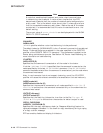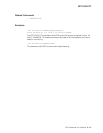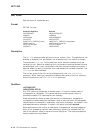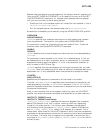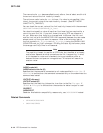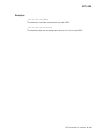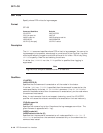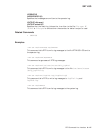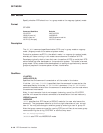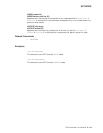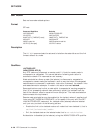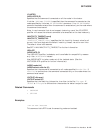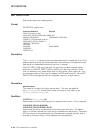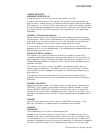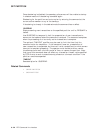
SET MODE
SET MODE
Specify whether RTR should run in a group mode or the nogroup (system) mode.
Format
SET MODE
Command Qualifiers Defaults
/CLUSTER /NOCLUSTER
/GROUP[=user-id] /NOGROUP
/NODE=node-list /NODE=default-node-list
/OUTPUT[=file-spec] /OUTPUT=stdout
Description
The
SET MODE
command specifies whether RTR runs in group mode or nogroup
mode. (Nogroup mode is the same as system mode.)
Production systems use RTR in the default mode, i.e. nogroup (or system) mode,
whereby all users running in this mode use one common invocation of RTR.
Developers typically wish to have their own invocation of RTR to avoid their RTR
actions affecting other developers or the production system. This mode is termed
group mode. Group mode allows development or testing of applications by several
groups of people on the same system without interference.
Qualifiers
/CLUSTER
/NOCLUSTER (D)
Specifies that the command is executed on all the nodes in the cluster.
If neither
/NODE
nor
/CLUSTER
is specified then the command is executed on the
nodes specified by the latest
SET ENVIRONMENT
command. If no
SET ENVIRONMENT
command has been entered then the command is executed only on the node where
the command was issued.
Note: In environments that do not support clustering, use of the /CLUSTER
qualifier will cause the relevant command to be executed on the local node only.
/GROUP[=user-id
/NOGROUP
/GROUP
specifies that RTR be set to GROUP mode for the user who issues the
command. The groupname defaults to the first eight characters of your current
user-id. You may also change to another group by entering a user or group ID.
Note that group names are used for naming RTR journal files; do not use a group
name containing the string ‘‘SYSTEM’’ or conflicts may occur.
RTR> set mode/group=develpr
/NOGROUP
sets RTR into NOGROUP mode.
6–118 RTR Command Line Interface



